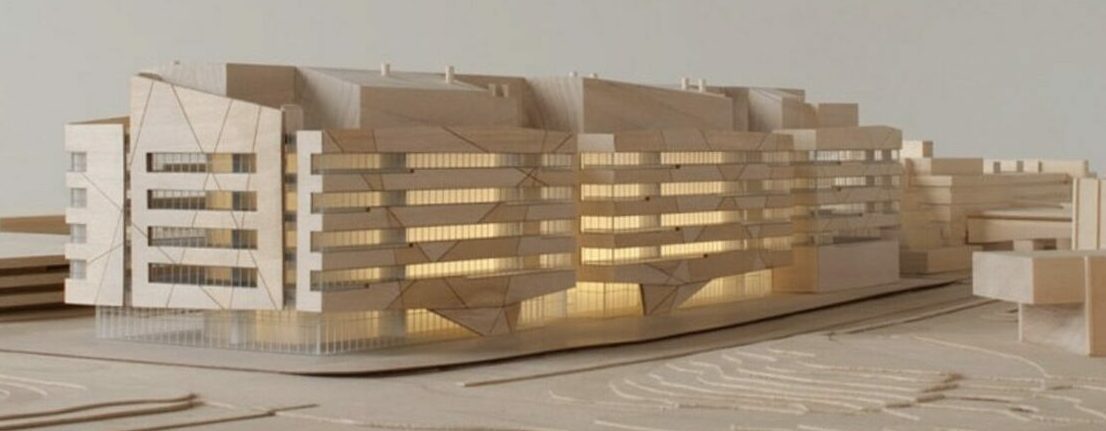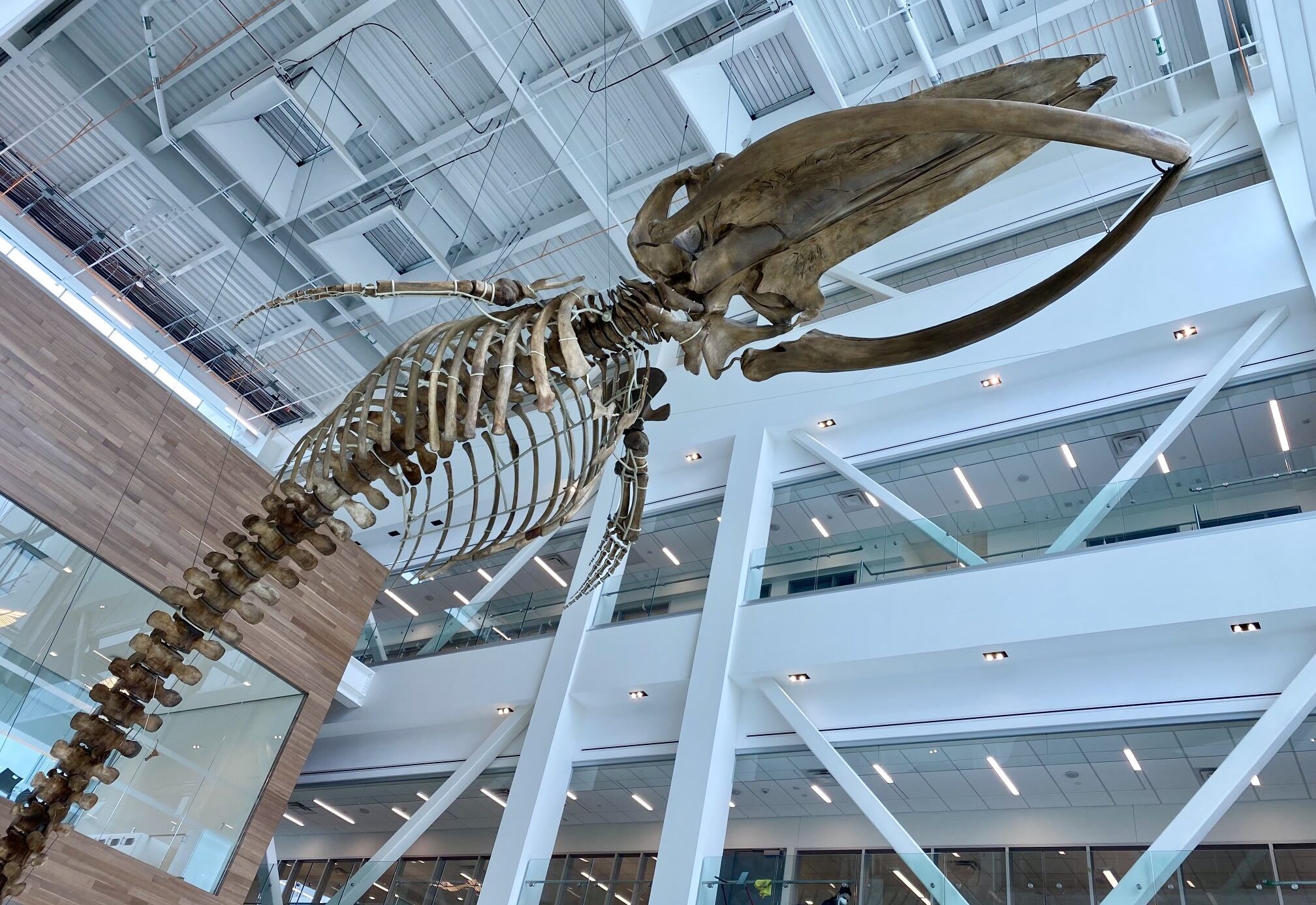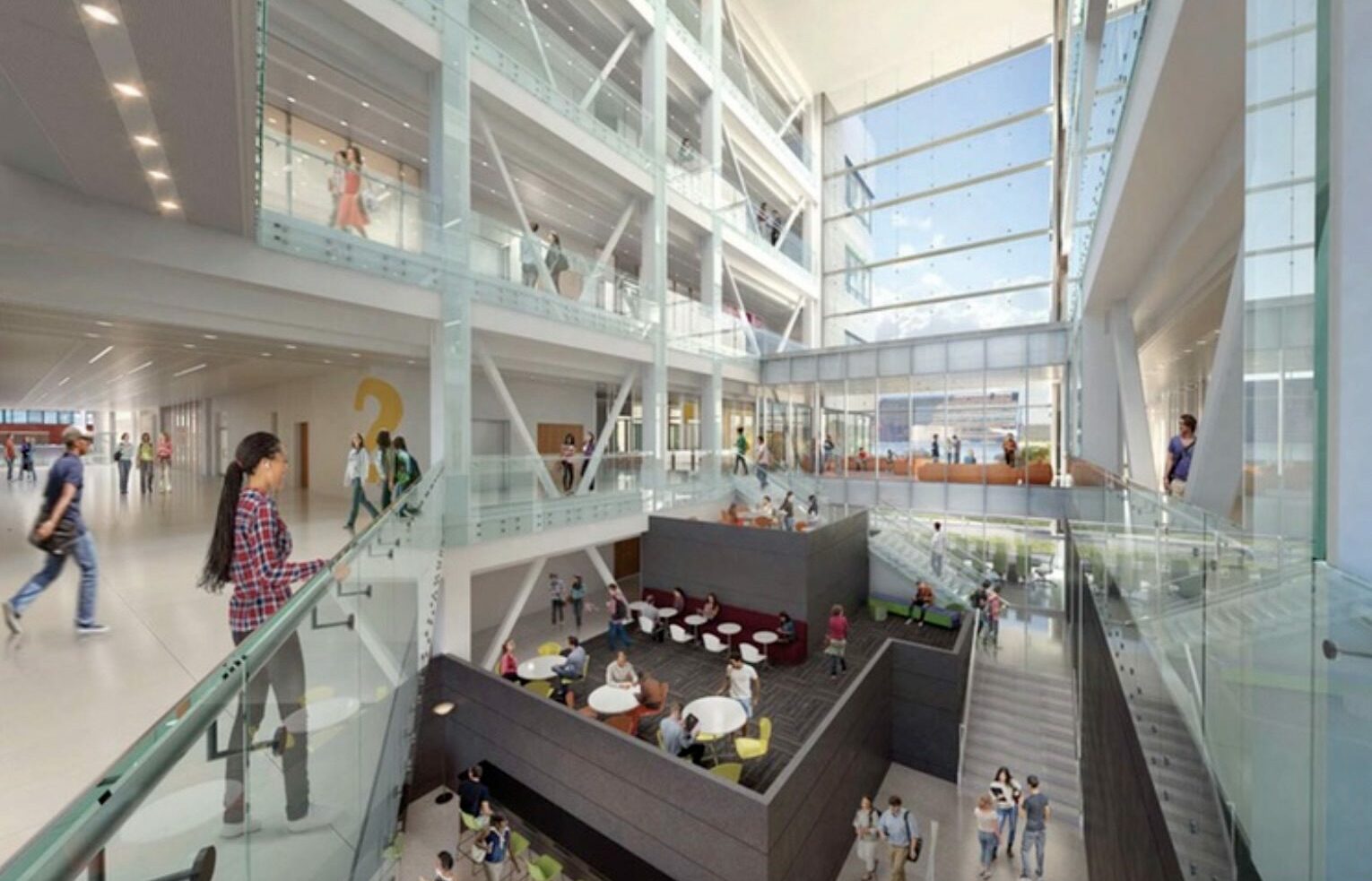At 480,000 square feet, Memorial University’s five-storey Core Science Facility is already a St. John’s landmark. Built to house both the Faculty of Science and the Faculty of Engineering and Applied Science, the facility was designed to foster collaboration between the two by promoting inter and multi-disciplinary approaches to science. The building will replace the school’s old science building, which opened in 1963, enabling the university to recruit world-class faculty and attract a greater number of graduate students.
Designed by Hearn Fougere Architects and HOK Architects, with building construction completed by Marco Services Limited, the facility is intended to mimic icebergs that are commonly found off the coast of Newfoundland and Labrador, combining three pavilions connected by glass enclosed walkways.
 Early design model photo courtesy of Hearn Fougere Architects.
Early design model photo courtesy of Hearn Fougere Architects.
Six years in the making, the building opened to students in September, with more than 3,000 undergraduate and hundreds of graduate students already using the building each week. Additional space is allocated for laboratories from the Core Research Equipment and Instrument Training Network, a Cryogenics Facility and an Aquatics Facility. There is also space allocated for the Ocean Frontier Institute, a $100-million multidisciplinary research partnership tasked with safe and sustainable ocean development, and led by Memorial University, Dalhousie University and the University of Prince Edward Island. A Memorial Centre for Artificial Intelligence is also planned.
 Blue whale skeleton photo courtesy of Memorial University.
Blue whale skeleton photo courtesy of Memorial University.
The building is home to a magnificent blue whale skeleton, stretching more than 25 metres through the west atrium of the building. Acquired by the university in 2014 after it washed ashore in Rocky Harbour, the skeleton was cleaned and prepared for display in partnership with the Royal Ontario Museum. Poised as if it’s swimming, the massive skeleton spans a height of two floors.

Interior rendering courtesy of Hearn Fougere Architects.
Completed on budget, the Core Science Facility’s total cost was $325 million. Memorial contributed $200 million: $25 million from the Memorial University Matching Fund and $175 million from a borrowing program. The Government of Canada, through its New Building Canada Fund, provided $99.9 million with the remaining $25.1 million being provided from the Government of Newfoundland and Labrador.
The building is a national investment that generated construction spending in multiple provinces, the majority of which was performed by companies and workers from Newfoundland and Labrador. Almost two million tradesperson hours went into the building’s construction, and more than $180 million dollars was spent in the province on materials.
 Exterior rendering courtesy of Hearn Fougere Architects.
Exterior rendering courtesy of Hearn Fougere Architects.
With the new facility officially opened earlier this week, federal, provincial and university representatives were on hand to celebrate.
“The new Core Science Facility is truly transformational for Memorial University – and the wider community,” said Dr. Vianne Timmons, President and Vice-Chancellor of Memorial. “It is a catalyst for collaboration and new discoveries, a rich on-campus learning environment for students and a focal point for the St. John’s campus.”
“Memorial University is unlike any university in the country. It nourishes the economic, social and cultural life of the province,” said Seamus O’Regan, Minister of Labour, and Member of Parliament for St. John’s South-Mount Pearl. “The Core Science Facility builds on a long history of visionary investment in this institution and will serve as a pillar for science education in Newfoundland and Labrador for years to come. The Government of Canada is thrilled to support this project that provides students, researchers and faculty at Memorial University new opportunities for research, collaboration and innovation.”
Premier Andrew Furey noted the long-term impacts of a facility that prioritizes interdisciplinary collaboration. “This Core Science Facility will be a centerpiece as Memorial recruits both domestically and internationally,” he said. “The students who come through this facility will bring about important change over the coming decades, in this province and around the world. The work done here will lead to exciting opportunities in Newfoundland and Labrador for students and researchers, help attract and retain highly qualified personnel in pure and applied science, ocean science and sustainable aquaculture, and will grow our economy.”
Main exterior rendering courtesy of Hearn Fougere Architects.
This article is based on previous material from Memorial University, and Cathy Carter, Marco Group.

